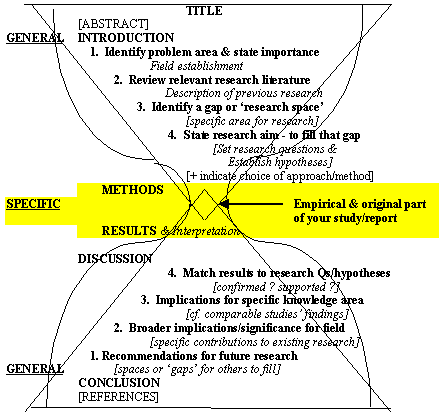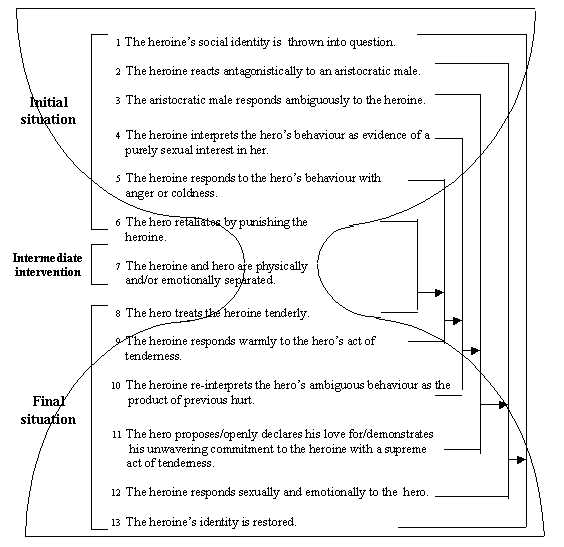
The Hourglass: a dynamic organisational model |
|
The Hourglass
The image
of an hourglass is useful to communicate
Here is the hourglass model applied to an investigative report.

The hourglass model is a useful and reader-friendly way of structuring of a report.
Go to Argumentation to see how the model combines with the deductive and inductive triangles.
The hourglass model shows how:
In both cases, there should be reference to:
The Hourglass and the organization of essays and investigative
reports
The essay:
exam and term essays
In an exam:
You can develop the skills to handle exam essays when you prepare term essays.
A term essay - whether for philosophy, religion, sociology or political science, follows the basic structure: Introduction, Body and Conclusion. This does not mean that you should not use these as headings in your essay.
TASK: Here is an example of how to organise your argumentative structure, set within the hourglass framework.
Can you see how the functions shift in level of generality?
[Introduction]: Position statement, establishing the problem
- or controversial issue under study
or your own view/argument- A summary of the issues
- Definition of key terminology
- Quotation and paraphrase of sources to build the controversial nature of the subject (optional)
[Body]: Including: Background to establish a past/present relationship (or in Introduction)
- A thesis to establish your position
- Arguments in defense of one side
- Analysis of the issues, pro and con
- Evidence from your reading, including quotations as appropriate
[Conclusion]:
- Re-establishment of thesis, clarifying a position which has evolved logically from your analysis and discussion of the issues
The investigative report and the mirror image
Investigative reports and essays both begin with a review of
largely secondary sources.
But an investigative report goes on to feature original, empirical (or inductive) research.
An investigative or research report can be based on:
Here is the hourglass model applied to an investigative report.

TASK
Notice how the sequence of functions in the Discussion section mirror
those in the Introduction, appearing in reverse order (1-2-3-4 mirrored in
4-3-2-1).
Q. What do you think is the explanation for this mirror sequence in the Discussion?
The Hourglass and the Text as narrative
The hourglass model can be used for the structure of any text.
The role of narrative in texts - telling a story
Scholars such as Thompson (1990) and Bruner (1990) believe that the way we interest each other in our texts is dominated by the timeless traditions of story-telling.
Texts have a beginning, a middle & an end
Texts take us on a journey and arrive at a destination. A more functional breakdown might suggest that they:
Sample Narrative Analysis, using the Hourglass
Model
Radway (in Thompson, 1990: 390) analyses the stages in the plot of a romantic
novel. She asked readers of novels about their expectations of a
typical plot in a novel and found certain patterns in their responses.
Her respondents felt it was important to have each clue or element in the plot resolved by the writer before the end of the book.
Here are the stages she identifies, based on her reader feedback:
Radway’s model shows how each complication is resolved, each knot untied, each thread brought together before the conclusion.
Look again at the Hourglass diagrams of the term essay and investigative report to see the parallels in structure and development between the different text types.
Radway’s model, with the hourglass superimposed
